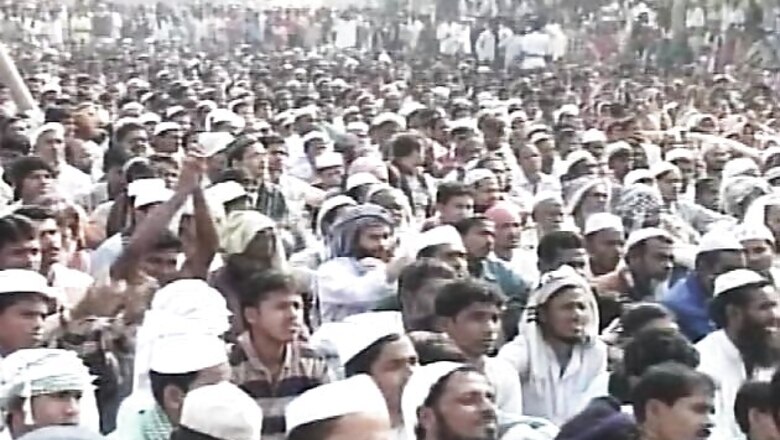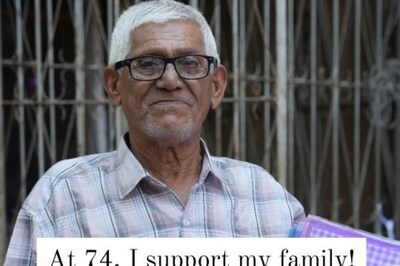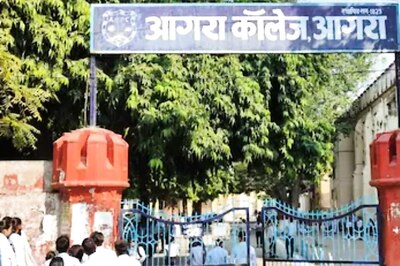
views
Bihar's seven parliamentary constituencies that vote on Thursday have a sizeable Muslim population whom candidates are earnestly wooing.
Bihar's most backward pockets with high percentage of poverty, illiteracy and migration are part of the five constituencies - Kishanganj, Purnea, Araria, Katihar and Supaul - known as the Seemanchal region as they share border with Nepal, Bangladesh or West Bengal.
They have a sizeable Muslim population - from 17 percent in Supaul to nearly 70 percent in Kishanganj. Supaul is also regarded as part of flood-devastated Kosi region.
Two other constituencies, Bhagalpur and Banka, are not in Seemanchal but both have significant Muslim population that will influence the poll outcome.
These elections are crucial for Bihar Chief Minister Nitish Kumar of the JD-U and his bete noire RJD chief Lalu Prasad and ally Congress as they vie to become the main player in Bihar politics.
For the Bharatiya Janata Party (BJP), the stakes are even higher as its prime ministerial candidate Narendra Modi hopes to get the mandate to form the next government at the Centre.
For nearly two decades, the BJP has been winning most of the Muslim-dominated Seemanchal seats, except Kishanganj, thanks to a sharp division of Muslims and a split of anti-BJP votes.
In the last polls in 2009, the BJP won Araria, Purnea, Katihar and Bhagalpur, barring Kishanganj where Congress candidate Ashrarul Haque won. He is seeking re-election this time.
Most of the time Kishanganj has voted for the Congress or the party backed by it in polls.
Even in 1989 when there was an anti-Congress wave and pro-V.P. Singh-led Janata Dal wave, Congress candidate MJ Akbar won the seat. Akbar, a journalist, was fielded by late Rajiv Gandhi.
Only once the BJP has won the seat.
BJP's Shahnawaz Husain won in 1999 defeating Mohammad Taslimuddin of RJD. In 2004, Taslimuddin defeated Shahnawaz, forcing him to shift to the Bhagalpur parliamentary constituency.
Shahnawaz is seeking re-election from Bhagalpur which has also nearly 300,000 Muslim votes. But unlike Kishanganj, Muslims cannot decide the fate of candidates in Bhagalpur.
Shahnawaz won the seat the first time in 2006 in by-polls followed by 2009 thanks to overwhelming support of upper castes, backward castes and Mahadalits due to Chief Minister Nitish Kumar, whose party JD-U was in alliance with the BJP then.
The situation has changed this time.
Shahnawaz is fighting a tough battle and the BJP camp is not sure of the poll outcome despite its claim of a Modi wave.
In Katihar, Muslims constitute 44 percent of the total votes. BJP candidate and sitting MP Nikhil Chaudhary is again hopeful of division of Muslim votes and other anti-BJP votes to make it through.
Tarique Anwar, a lone union minister from Bihar in the Congress-led UPA government, is in the fray in Katihar as an NCP candidate.
Tarique, who had represented Katihar four times as Congress MP, had not won the seat from 1999. BJP's Nikhil Kumar is winning this seat due to division of Muslims and the presence of more than two or three Muslim candidates in the field.
However, Tarique is confident as it is the first time that he is contesting the election in alliance with the Congress and the Rashtriya Janata Dal of Lalu Prasad.
Another constituency, Araria, with 41 percent Muslim votes, is represented by BJP's Pradeep Kumar Singh in parliament. In this seat too, division of Muslim votes and the presence of more than two or three Muslims in the fray helped the BJP in the last polls.
In Purnea, Muslims form about 30 percent of the total votes, but the BJP without their support won in the last polls. BJP candidate and sitting MP Udai Singh is confident of a Modi wave.
In these constituencies, dominant mood among Muslims is to support candidates who can defeat the BJP in view of the hype over BJP prime ministerial candidate Narendra Modi.
It was evident last week when JD-U candidate from Kishanganj Akhtarul Iman announced not to contest the polls to prevent a possible split of Muslim votes. "Fear of Modi is a big advantage for a rare unity of Muslim voters against the BJP and it will also minimize split of anti-BJP votes."
Till date, the Seemanchal region remains free from communal tension.




















Comments
0 comment